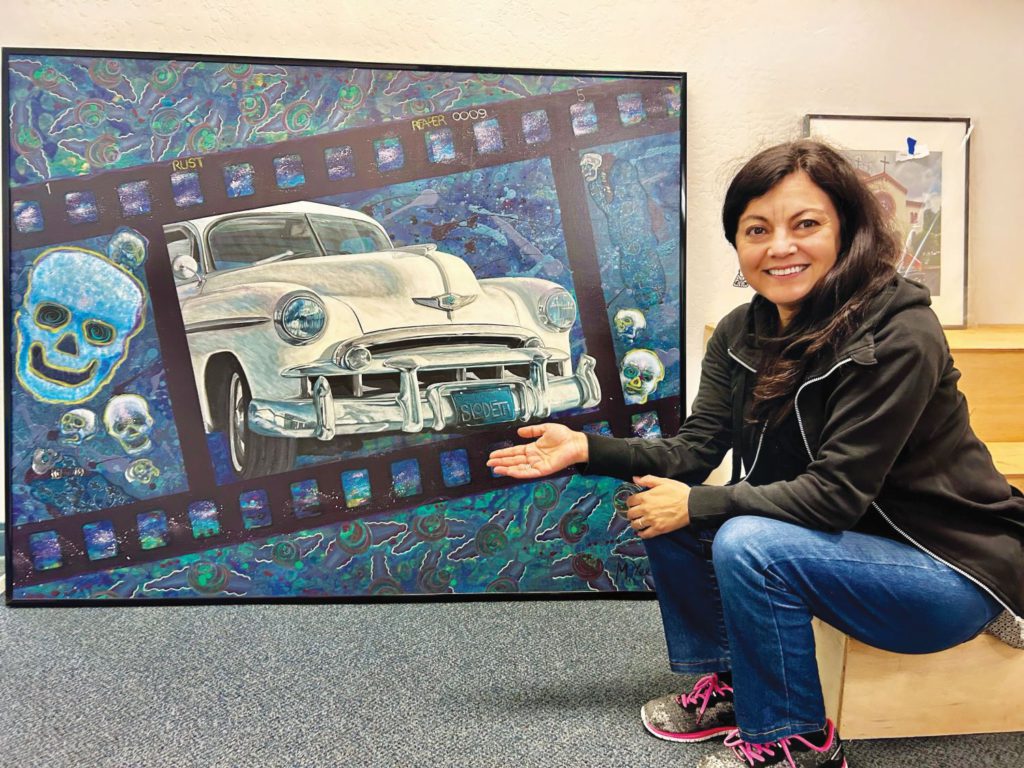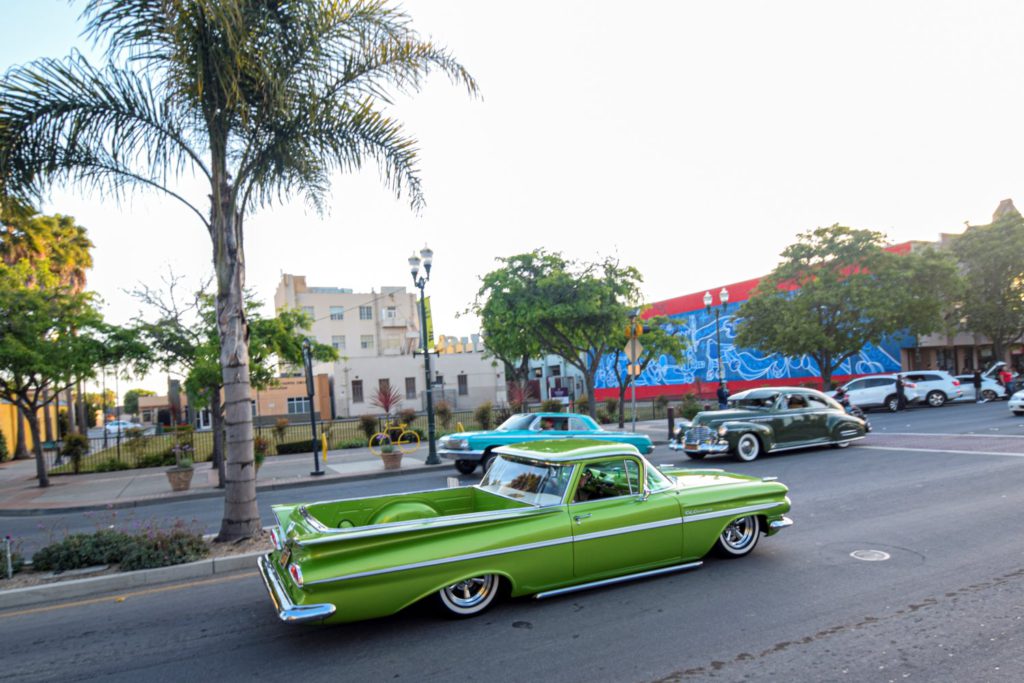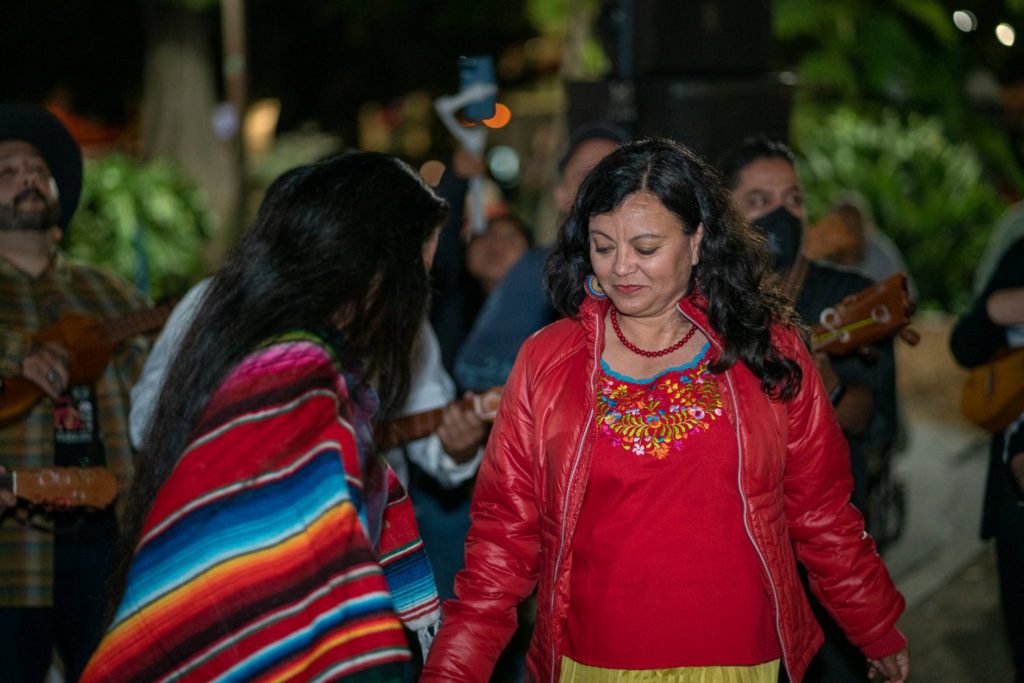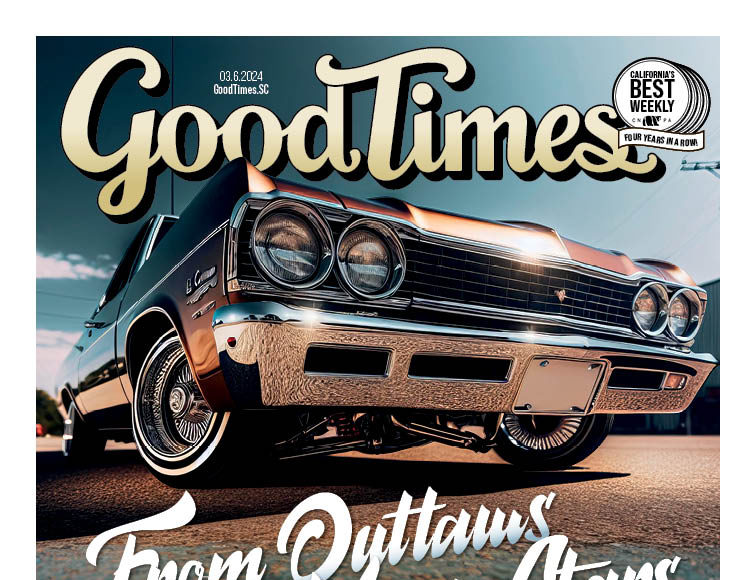Bold representation of an underrepresented culture and lowriders are among the themes of this year’s 12th Annual Watsonville Film Festival.
The festival will present over 40 Latine films of community stories, shown at the Cinelux Green Valley Cinema and online, including one about a 9-year-old Watsonville boy who has never seen the ocean.
“The audience is our own community, celebrating our stories that we don’t see represented in the media; the diversity, the beauty, the nuanced stories that we have as a Latine community,” says festival director and co-founder Consuelo Alba.
“And the lowriding community who brings us together. Being part of a lowrider community is a fellowship. It’s something you give back.”
Latine representation in film is 4%, according to a study by Spectrum News. In California, Latines are 30 % of the population.
“The Watsonville Film Festival presents stories that illuminate our shared humanity and inspire meaningful change, portraying ourselves in more authentic ways than mainstream media depicts us,” says Alba. “Let’s go beyond the TV show Narcos and tell our real stories. The festival is interactive, with audience Q & A after each film. Actors, directors, and writers will dialogue with the audience.”
Co-founder and Director of the Watsonville Film Festival, Consuelo Alba has leveraged the power of film to inspire, connect and shift disempowering narratives and harmful stereotypes of the Latine community. She is an award winning-documentary filmmaker and executive producer of local films. She directed El Andalón /The Healer, screened in 30 film festivals worldwide, received seven awards and was broadcast on Mexican public television.
She favors the term Latine for this article.

“I understand a lot of people still use Latinx and it has been like that for a while,” she says. “And we are moving away from that because Latine takes into consideration the Spanish language. Because the E is actually gender neutral. That’s why E works really well in Spanish and we’re bringing that back. It’s inclusive. And, because in Spanish, Latinx is hard. I know there are a lot of different conversations about it. You know, some people never liked Latinx. Latine makes sense to me.”
Alba was born in Mexico City, where her parents instilled a “deep appreciation for our culture.”
Since moving to California 25 years ago, she made it her mission to honor her cultural legacy through her work as a translator, reporter, editor, business owner, documentary filmmaker and cultural activist.
After graduating with a BA in Communication Sciences & Journalism from the Universidad Nacional Autónoma de México, she fell in love, moved to Santa Cruz and worked as a translator for El Andar,an iconic bilingual magazine, and as an editor and reporter with Nuevo Mundo, the Spanish language publication of the San Jose Mercury News. Consuelo is the Board Chair of the Arts Council of Santa Cruz County and inaugural member of Rise Together, a coalition of 32 Black, Indigenous, and People of Color leaders and a team from the Community Foundation of Santa Cruz County working to advance racial equity.
“This year’s festival will honor the resilience and creativity of lowrider culture,” says Alba. “We have films that really change the narrative about the lowrider community and the Latine community in general. Here in Watsonville, we have a lowriding community that is very strong.”

Victor Ruiz, of Santa Cruz, sees lowriders as more than just cars and drivers.
“The point of going cruising is to show off your car, the kind of paint job you put on it,” he says. “The best cruising is in the summer, with your windows down, music blasting. Lowriding is not a sport, it’s a way of life. Not only are the cars beautiful, but they are vehicles of expression for the artist who has found community.”
Lowriding began in California among young Mexican Americans, who took the middle-class American symbol of the automobile and turned it upside down. Picture the flashiest possible rolling art creations imaginable, made to float “low and slow,” all to sexy, throbbing music. Has there ever been a more dazzling symbol of defiance against police harassment? It has spread to marginalized communities across the country, and as far as Japan.
In the Alberto Pulido documentary, Lowriding: Everything Comes from the Streets, Constancio says, “Lowrider is the Chicano’s way of resisting, and saying, ‘You know what? ¿ Sabes Que? This is me. ¿Y que?’ (So what?)”
As one of my neighbors said, “Have you ever seen someone drive a lowrider car who was sad?”
I was born in the Deep South, Bakersfield, California. Some of my Kern County cowboy cousins built monstrous, jacked-up pickups, and I never heard of police harassing them on the pretense that these odd-looking trucks were too tall. Not once. Nunca. But somehow vehicles being too low presented a danger to us, and police never stopped promoting that scary narrative about lowriders.
Five local lowrider clubs have contributed to this exhibit, says Alba. Watsonville Riders, Watsonville Impalas, Family First, Classic Memories and Killer Klowns.
These five clubs have supported farm workers and essential workers during the pandemic, helped victims of the Santa Cruz CZU Fires and helped those affected by the flooding in Pajaro.
Lowriders take pride in sponsoring free Halloween events, food and toy drives. In planning this exhibit, more than 75 lowriders have shown up to the meetings. They wanted to be a part of creating the exhibit, not just contribute to it.
“This aligns with the mission of the Watsonville Film Festival, to create ways for people from the community to tell their own stories,” says Alba. “It is a huge network. They have been stigmatized, always. That is the change of narrative that we’re trying to do, first through storytelling, through film, and then with community engagement.”
Go to the lowrider art exhibit event March 10 and you can learn more about the different car clubs and their histories. Each one of them is going to have a display section where they are going to be representing themselves and telling their stories.
Lowriding culture is deep and wide. Smithsonian Magazine says lowriding started with the Pachucos and the Zoot Suiters, bootleggers from the 1920s through the 1940s.
Wearing expensive suits and having booze in their weighted down trunks meant they had money and status. To emulate this style of success, static lowriders were built. After WWII, Los Angeles lowriders would take the hydraulics from old WWII planes and put them in their cars to make them go up and down.
Police began to associate the cars with outlaws and troublemakers and target them. In 1958, California outlawed cars that were below the wheel rim. The hydraulic systems came in where they raised the cars when the cops were around, lowered them when they weren’t there. Police officers harassed lowriders and broke up cruising events.
“Lowriders are not gangsters, we’re not looking for trouble,” says Victor Ruiz. “It’s a chance to laugh and celebrate each other. People whistle and wave, and we wave back. These are my people.”
The Festival is bringing in an influential law writer lowrider advocate. His name is Roberto Hernandez. He’s the San Francisco Lowrider Coalition president who was key in lifting the lowrider bans.
Growing up in San Francisco’s Mission District, Hernandez loved zoot suits and art, according to a report by Capradio.org. Hernandez says that lowriding “is in my DNA.”
He remembers the SF glory days.
“At one point it was bumper to bumper for 20 blocks. It was like a parade every Friday and Saturday night,” Hernandez says.
Police issued citations, made arrests and even shut down Mission Street, where lowriders went to cruise. Across town in white neighborhoods, cops left the kids alone to race, while in the barrio they gave out tickets for going low and slow.
Hernandez, who said he was arrested 113 times, was done. He and other lowriders filed a civil rights lawsuit against San Francisco Mayor Dianne Feinstein and the police. They won.
Roberto Hernandez will be part of the Q&A following the film screening of “La Mission” March 9 at Cinelux Green Valley Cinema. Doors open at 6pm with a Red Carpet event out front.
The street signs would say: NO CRUISING – TWO TIMES PAST SAME POINT WITHIN SIX HOURS IS CRUISING and give police the power to levy a $250 fine.
On October 13, 2023, Gov. Gavin Newsom signed California Assembly Bill 436 into law, repealing lowrider bans and lifting a state prohibition on modifying a vehicle to reduce its clearance from the roadway. Targeted by police for half a century, lowriders can now cruise California police-hassle-free. Their good works continue – holding the community together, “keeping the peace.” Californians have the green light to ride low and slow.
The mobile masterpieces made by lowriders embrace art, family, and religion. The lacquered bodies of lowrider cars glow with brilliant colors, geometric patterns, religious symbols, and velvet trim.
How to see these rolling works of art:
More Than Cars: Celebrating Lowrider Culture Exhibit will open on Sunday, March 10 as part of the 12th Watsonville Film Festival.
It will continue with a series of films, an art exhibit, interactive learning activities for youth, panel discussions and of course, car shows.
Exhibit Dates: March 10 – June 30, 2024
Opening Reception: Sunday, March 10, 1:00pm-4:00pm
Location: PVA Porter Building, 280 Main Street, Watsonville
The Festival will present over 40 Latine films of community stories, shown at the Cinelux Green Valley Cinema and online. See the festival’s full schedule of events at: https://2024wff.eventive.org/films
There will be music at movie premieres including Carlos Mejía Godoy, Friday, March 15, 2024 6:30pm, as well as XXIII, Gabi Bravo and Soul Driverz on March 7& 8, and 9 at 9pm after the films.
Along with the films and live music, there will be amazing cars that can make transformer-esque moves using hydraulics.
See a complete list of the films and summaries at goodtimes.sc.














